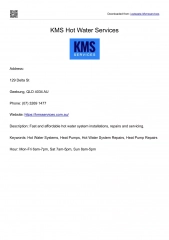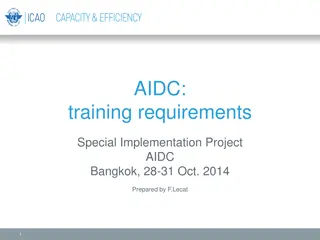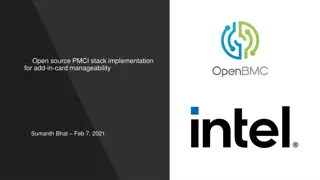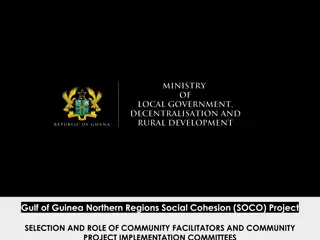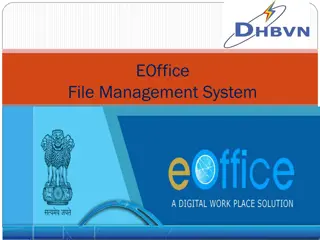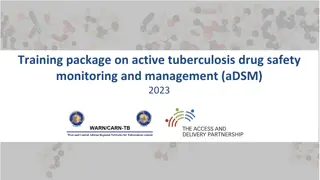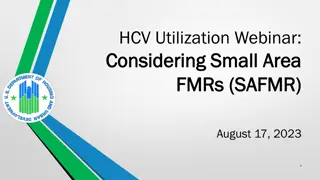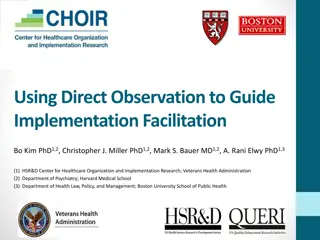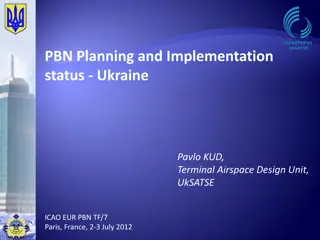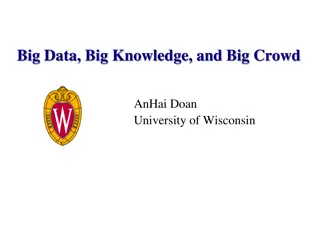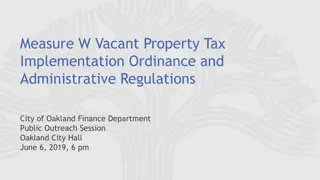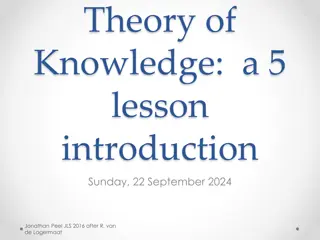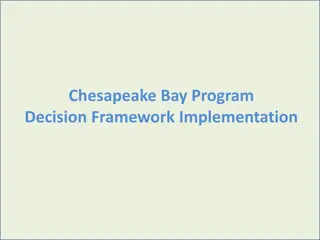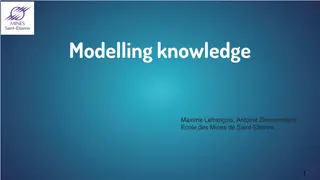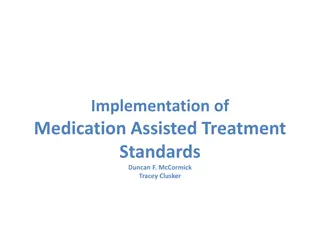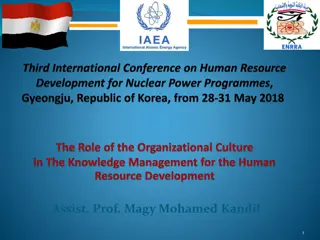Understanding eOffice: Knowledge Management System (KMS) and Implementation Steps
eOffice consists of modules like Knowledge Management System (KMS) that help in organizing and sharing knowledge within an organization. The system streamlines communication, enables access to email, facilitates MIS reports, and provides steps for successful implementation, including ICT infrastructure setup, training programs, and action plans for offices.
Download Presentation

Please find below an Image/Link to download the presentation.
The content on the website is provided AS IS for your information and personal use only. It may not be sold, licensed, or shared on other websites without obtaining consent from the author. Download presentation by click this link. If you encounter any issues during the download, it is possible that the publisher has removed the file from their server.
E N D
Presentation Transcript
KMS| What is KMS? KMS- Knowledge Management System is one of the modules of eOffice. knowledge of organization properly, indexed and catalogued. It organizes content in a logical way, and makes it easy to standardize presentation across the organization It promotes knowledge sharing and information search as each user can provide content for KMS. It organizes the content creation and
NIC Mail through eOffice This allows a user to directly access his email account from within the application and also diarize any communication received on his email.
eOFFICE | MIS Reports It facilitates reports on all parameters in the eFile application.
eOFFICE| Implementation of e-Office Steps being taken centrally for all by CBIC (through DGPM)
eOFFICE| i. ICT infrastructure for hosting of the application First requirement to use the application is to obtain ICT infrastructure where e-Office application can be hosted for CBIC. This is being done at one of the National Data Centers of NIC. Once this is done, and the users mapped (after obtaining EMD data from the field), one would be able to login using one s @gov.in email account. Licenses from NIC to use eOffice - Simultaneously license to use e- Office application is being taken from NIC. LDAP binding for all users This enables one to use one s @gov.in email account for logging into e-Office. iv. Domain Registration The URL where one will login (say- eoffice.cbic.gov.in) to work on eOffice. v. Training to users : Manpower is being hired to train master trainers in each office, who will in turn train all users in their respective offices ii. iii.
eOFFICE| Steps to be taken by all offices 10 Point Action Plan
eOFFICE| 10 Point Action Plan For Implementation i. Commitment- Commit at senior level to implement e- Office. ii. Form a Core Committee for implementation (may include a local NIC officer contact SIO of the State; go to https://www.nic.in/employee-list/) iii. Carry out Hardware Gap Assessment and provide hardware to those who don t have it; AIOs can be used for e-Office. iv. Purchase few Scanners for scanning physical files/dak (prefer stand-alone scanners and not multi functional printers)
eOFFICE| Action Plan for implementation vi. Shift to a high speed internet connection (preferably leased circuit or internet leased line) with all equipment connected to LAN, if possible. vii. Prepare Employee Master Data (EMD) in template to be supplied by the DGPM in due course. viii.Obtain DSC for digitally signing note sheet and letters ix. Digitize old records (award contract for scanning through GeM), if not already done, for using them on eOffice; can use SAP budget; follow scanning guidelines x. Preferably hire manpower (through NIC) for onsite assistance - at least one per zone.
eOFFICE| Application- Where will it be & how to access it The eOffice application shall be hosted on a remote server (likely National Data Centre Bhubaneswar). It would be accessible through a URL: (say https://eoffice.cbic.gov.in One will be able to access it through a normal internet connection (a high speed connection with LAN would be better).
eOFFICE| PCs for all Basic requirement to access e-office would be device with good internet connection- a PC/ AIO/laptop. Carry out a hardware gap assessment and identify those without a PC/AIO/laptop. Ensure these for all including for Inward and Despatch Clerk (named Central Registry Unit, CRU in eOffice) and for the person made responsible for checking office emails. AIOs (given by DG Systems) can be used for working on eOffice; they are already connected to the internet through LAN/WAN. Separate internet is not required for them.
eOFFICE| Internet Fast internet connection means no perceptible time lag between clicking and opening of a file. One can use wi-fi, dongle, broadband or internet leased line. However, best is to have a Local Area Network and a dedicated line for internet. In smaller offices- one can have OFC connection. Many service providers give FTTH (Fibre To The Home) with good speed and sufficient data download. LAN would be preferable - as it is more reliable. To begin with one can take broadband - or wi-fi dongles. One can even use mobile hotspot to work on eOffice.
eOFFICE| Scanners Application uses pdf for security of files. Thus, the correspondence pages have to be in pdf, meaning that dak has to be scanned before it can be attached to eFile. Hence, scanners are required, in every office, for scanning of dak and letters. One/two scanning machines at CRU, depending on physical dak received, and one or two small machines in Sections with high scanning requirements may suffice. One can use OE (Swachhta) budget as scanning and digitisation is approved under Swachhta Action Plan.
eOFFICE| Hiring of manpower For onsite assistance, a manpower may be desirable. This can be obtained from NIC Services Incorporated (NICSI). One manpower should be enough to cater to many offices in the same building and around as assistance can be given using apps like AnyDesk.
eOFFICE| Submission of eOffice Master Data Employee Master Database (EMD) data would be required for generating instance of eOffice. The required template for filling the data would be shared by DGPM in due course.
eOFFICE| Creation of File Heads File heads for creating new files on e-Office have to be finalised according to the needs of various branches in every secondary, tertiary heads are to be provided. office. Basic, primary, A no. of these required in a GST Zone have been finalised and are in use in Chandigarh CGST Zone. They will be shared by DGPM with others for comments and views before finalising.
eOFFICE| DSC /e-Signing 5. Legal recognition of electronic signatures. Where any law provides that information or any other matter shall be authenticated by affixing the signature or any document shall be signed or bear the signature of any person, then, notwithstanding anything contained in such law, such requirement shall be deemed to have been satisfied, if such information or matter is authenticated by means of electronic signature affixed in such manner as may be prescribed by the Central Government. Thus, documents such as summons, PH notices, OIOs etc. can also be digitally signed and remain valid as long as they are in electronic form. When they are printed, signatures must be affixed.
eOFFICE| DSC /e-Signing Digital signatures: They come with a physical dongle, and are issued to a specific person. May be suitable where one has to use them often as in that case eSign can be expensive. eSign: They are integrated with the application; they work by sending OTP on the Aadhar registered mobile of the user; charges are on the basis of no. of times they are used.
eOFFICE| Training to users Training to master trainers shall be arranged by DGPM through the hired manpower for roll out of eOffice. These master trainers shall give training to users in an office. Training can also be obtained from local NIC (NIC State Center) or from videos available online.
eOFFICE| LDAP binding for email LDAP binding for all created users with Govt. email is required to sync email server with the eOffice application server. The email details shall be collected by DGPM for LDAP binding by NIC.
eOFFICE| Scanning and migration of physical Files Working files may be required to be migrated to eOffice. Therefore such files may be listed; duly page numbered incl. note sheet and correspondence pages for scanning and digitisation; For scanning and digitisation of the files, contract can be awarded through GeM . SAP budget can be used for this purpose. GEM has many companies which carry out scanning and digitisation. Procedure for scanning and migration of files is given at https://docs.eoffice.gov.in/Guidelines_for_Scanning.pdf https://docs.eoffice.gov.in/Guidelines_for_Migration.pdf respectively to scan and migrate scanned files onto eOffice. Of course migration can begin only after launch of e-Office. and
eOFFICE| eOffice Administrators The eOffice application requires System Administrator and Local Admin who have to manage the data entry and changes required upon change in charges and transfer of users. Two officers can be identified for this purpose in each Commissionerate/Directorate, who can receive additional training on eOffice. AC/DC-Systems may be made the Local Admin of eOffice, who can be the single point of contact for users of a Commissionerate/Directorate. One may issue Office responsibilities. Orders to assign these
5 Mantras for successful implementation Commitment of senior officers DGGI Chandigarh, even though not part of the Chandigarh Zone, was able to implement it due to commitment of its Joint Director. Dedicated/ Enthusiastic Core Team High Speed internet connection A poor internet connection will result in frequent interruption of work frustrating users, who may tend to blame it wrongly on server failure. Proper Infrastructure PC/AIO/Laptop for all users; some scanners Training of staff May require training/support for six months
Thank You. In case of any doubts please write to DGPM Delhi at dgpm.insp-cbec@nic.in or to me at sunils.katiyar@gov.in


